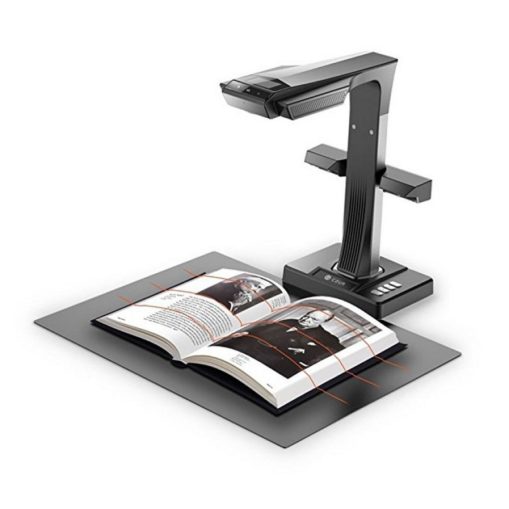There is tons of paper based ephemera left behind from recent times. Most of it is of interest to someone, and much of it describes life in the UK and abroad from the 1830’s
Stuff like workshop manuals for 1930’s cars, old political pamphlets, train timetables etc.
How can we preserve these documents? As time goes by they degrade, not only does wear and tear slowly makes them fall apart, but also specialist moulds grow on paper, slowly covering the paper in brown smudges
The obvious method is to scan them and save the digital images
First up there are the flat bed scanners many of us have at home, or use at work. They produce a good image quickly. But they suffer from having to open the book wide, probably breaking the spine. So instead of the book you started with you have a pile of loose pages.
A small book where the pages are folded over and staples put in to hold it all together will survive a flat bed scan, unless the staples have rusted causing the paper to start to disintegrate.
You can take a biggish book, chop off the spine then put through the document handler on a copier/printer/scanner as you find in many offices, but that destroys the book.
Flat be is good for maps.You can make a good set of scans of the map with a decent overlap, , then stitch the bits together with a product like Microsoft Image Composite Editor. Its no longer supported by Microsoft but you can get copies to download if you google it.
Here is a bus map from 1963 that some has scanned and used Image Composite Editor to create 1 big image

If you want to do non-destructive scanning, you need a book scanner. They take a photograph from above of the open book, and use lasers to get a profile of the open book and to ‘flatten’ the image. Software on a pc can then split an open book scan into 2 pages, and to crop them. So in theory you can scan a book and get clean images without intervention, but how well the automatic process works depends on the quality of the source material.
I use a CZUR ET16.

It has buttons so you can control the amount of light. That matters for shiny paper.
It has 3 holes in the back. One for power supply, one a USB output to link it to your pc and one for either a pedal or a hand held device to tell it to do a scan.
You download the software from their website and off you go. You specify the file names to use and the folder where you want the scans putting.
Here is a page from a 1971 beano I scanned (Ed – Which you’ll have to imagine due to copyright)
So where do you share your historic scans
Sites like facebook are no good – I am sure they will purge stuff when it stops being of interest.
So I save stuff to Wayback Machine. There you can save images and they are for all to share. Most are out of copyright as they are old, or the original owners just don’t care. I would hope Wayback machine will exist a long time as it has the express purpose to save electronic stuff, like websites, book scans, movies, TV shows, photographs, and document scans.
I also have an interest in very old bus and train timetables. The go-to site for stuff like that is timetableworld.com. They rely on people allowing their collections of transport timetables to be scanned and be published on their website. All free for people viewing the documents. They have UK train timetables going back to 1839 and bus timetables back to 1923. They also have timetables from abroad and air timetables. All run by a bloke in Berkshire in his spare room!
It’s tempting to think that printed stuff from the 20th century is just rubbish. But in my view, it’s important stuff and part of our heritage.
© Alexsandr too 2023


